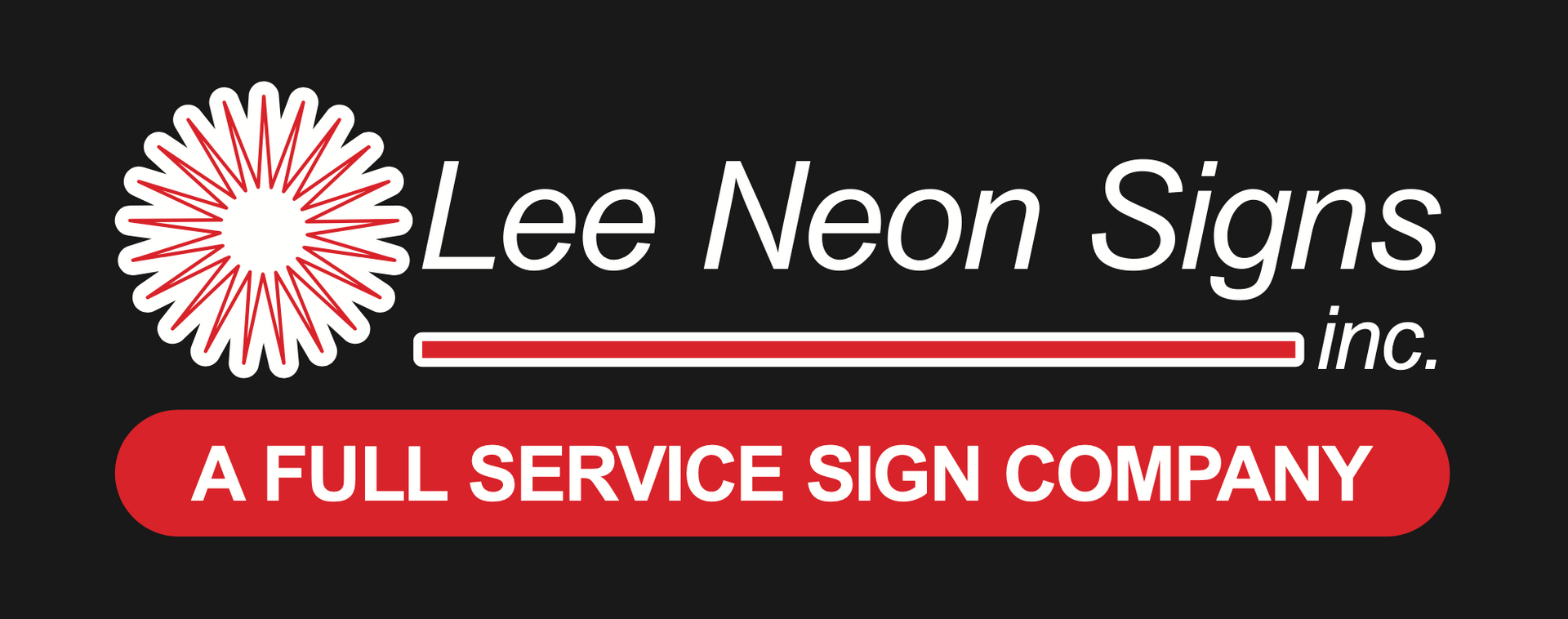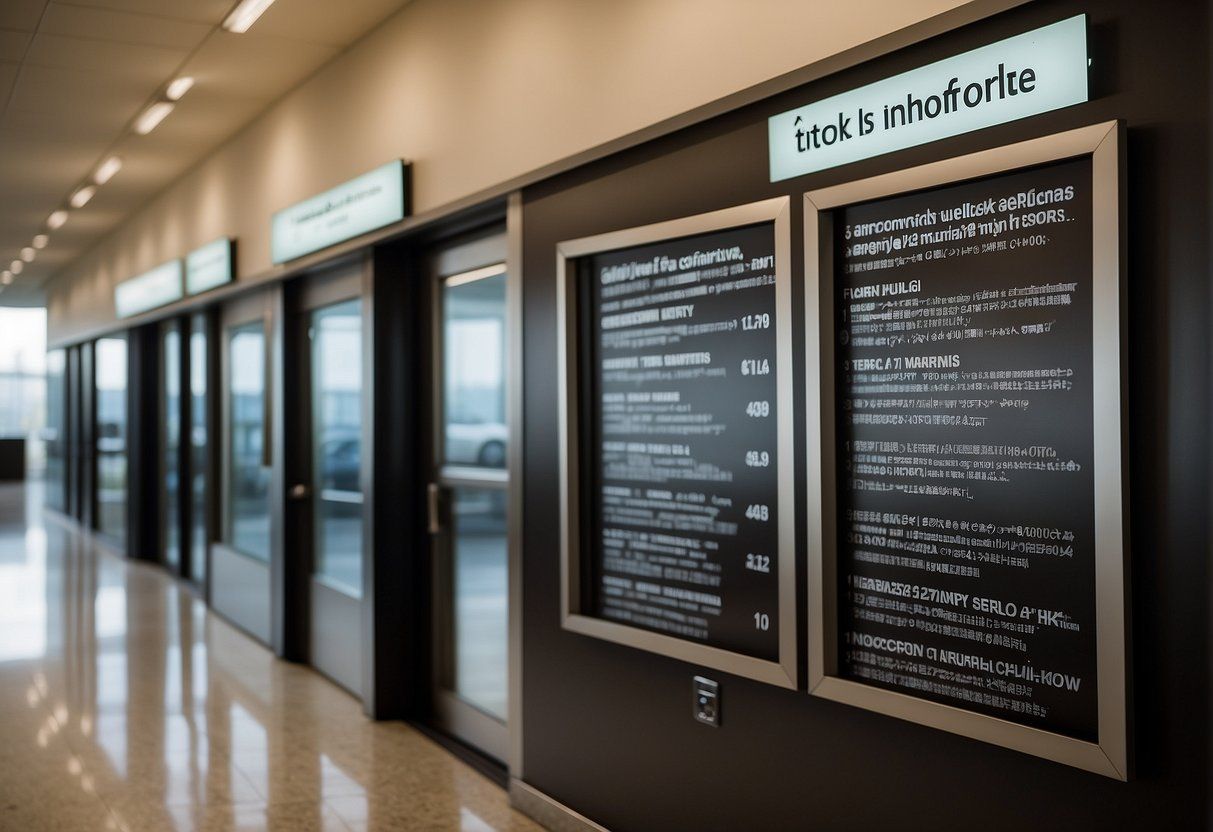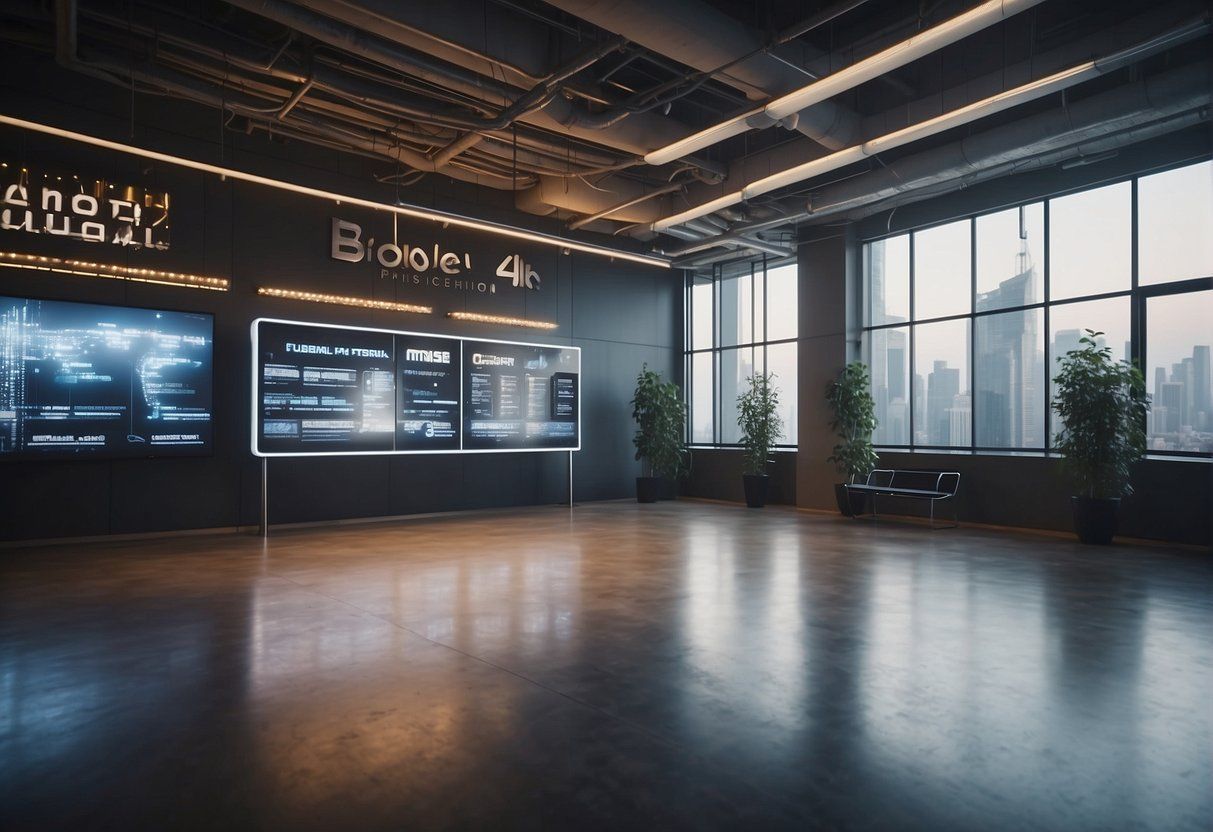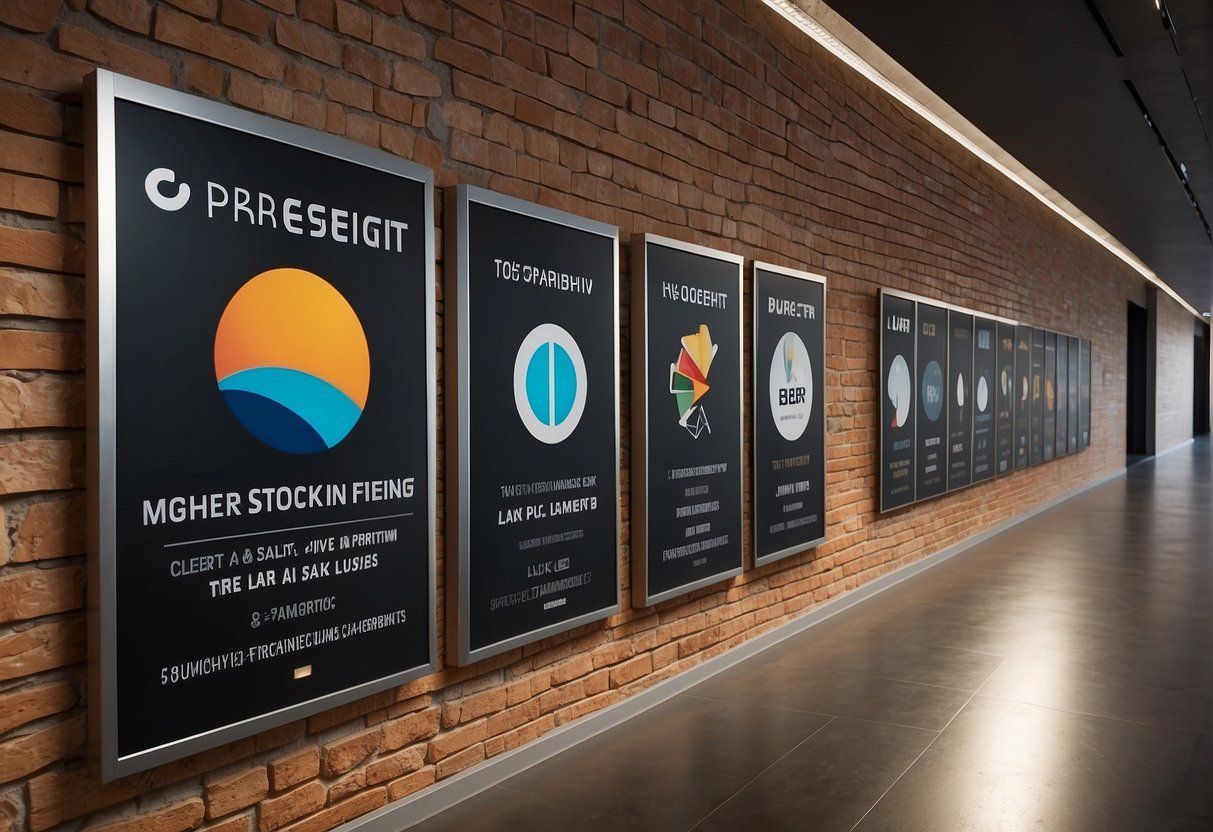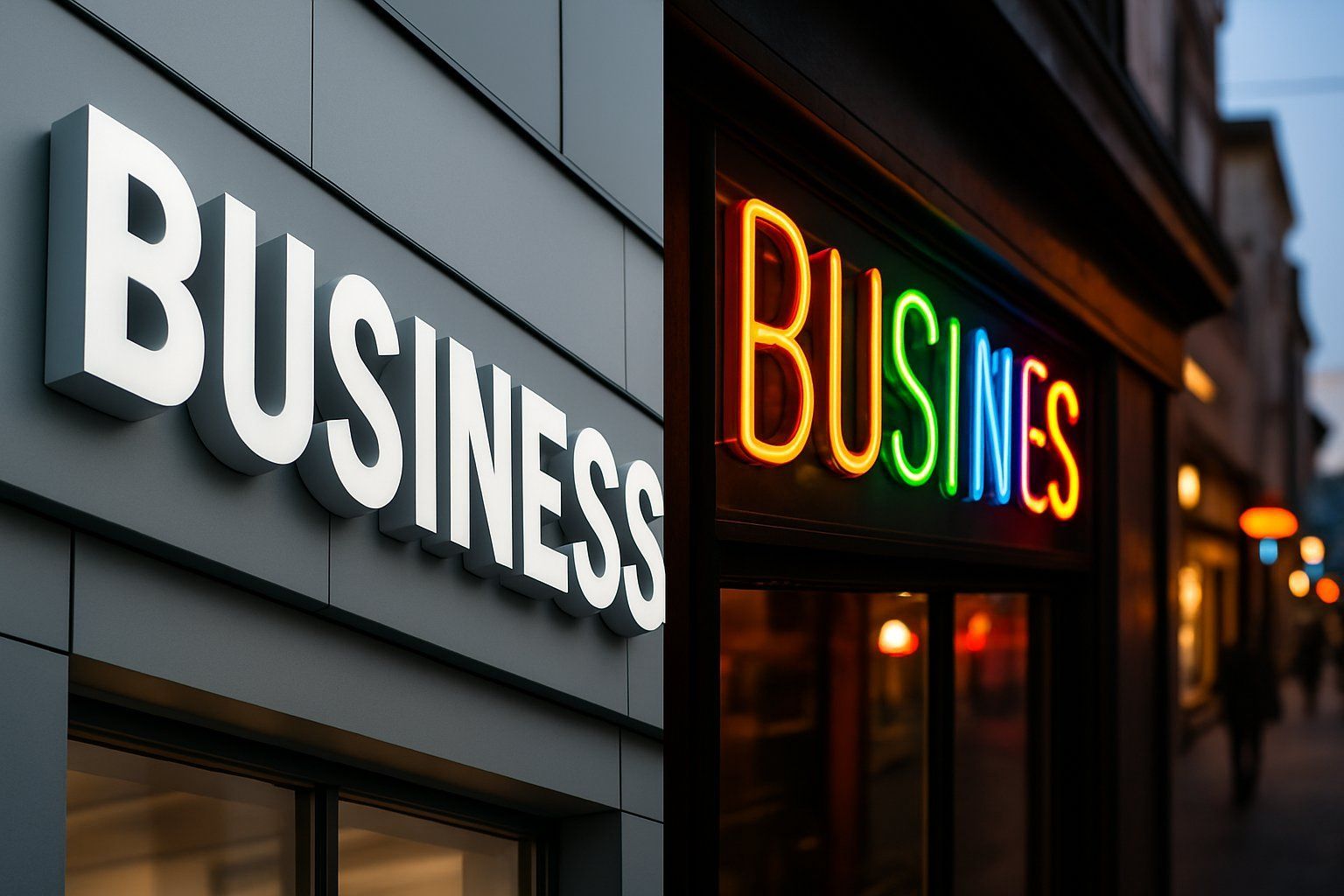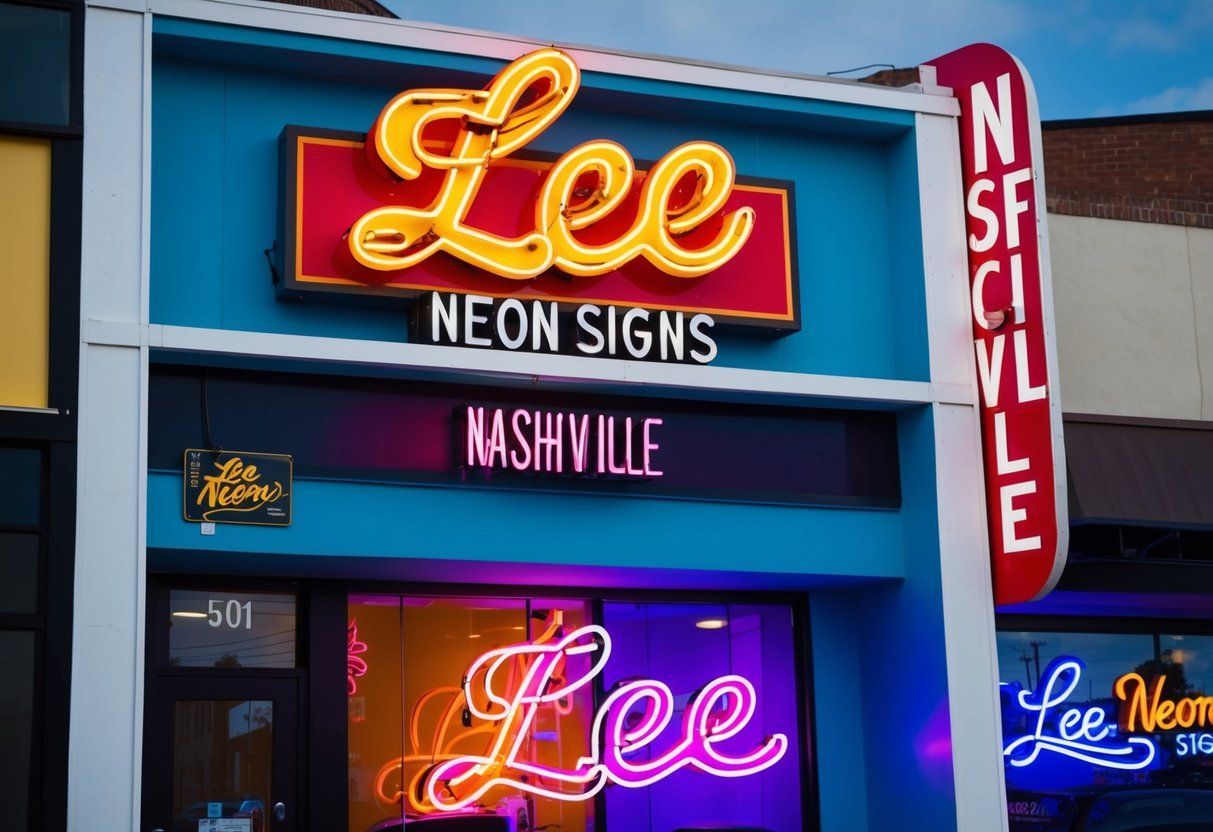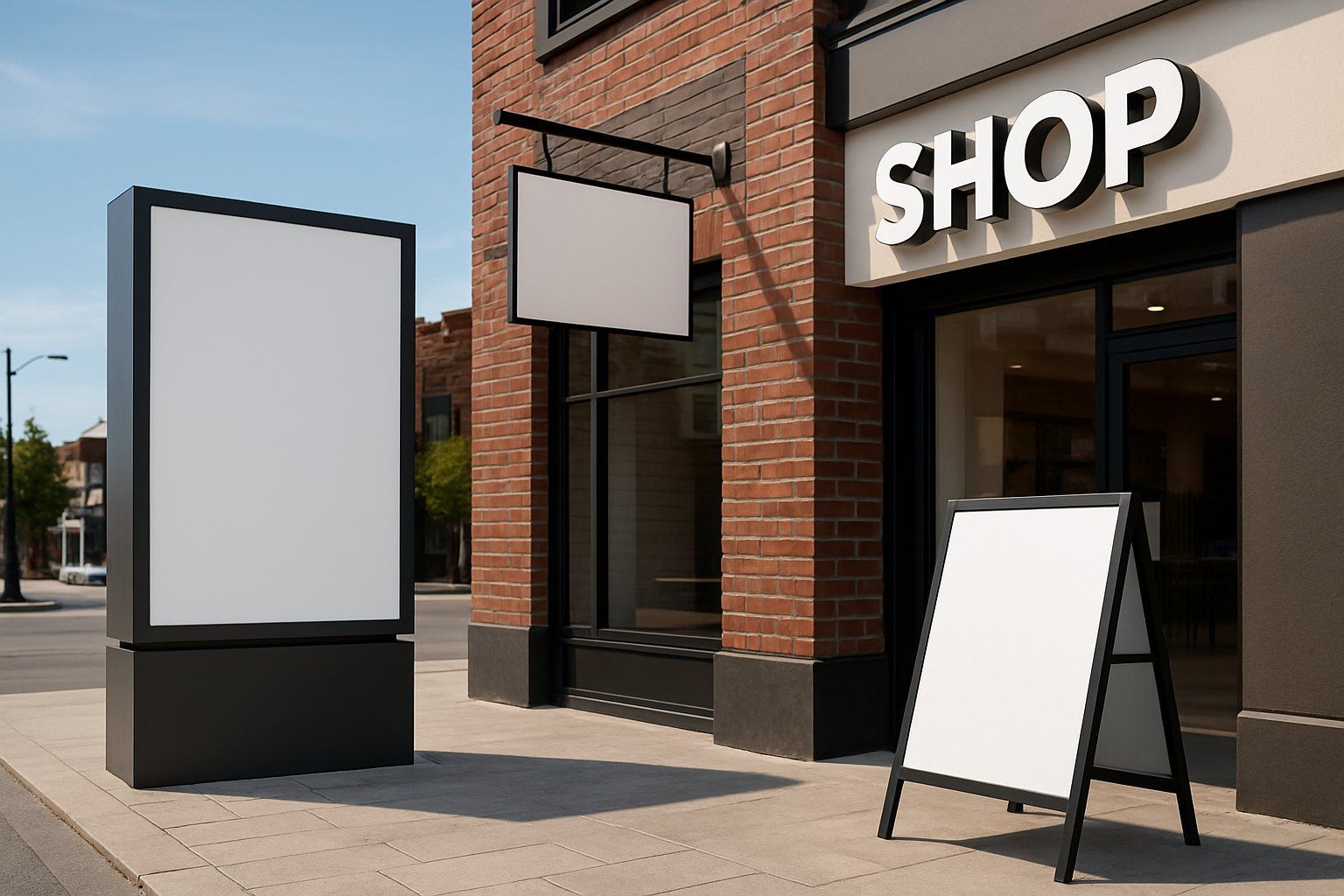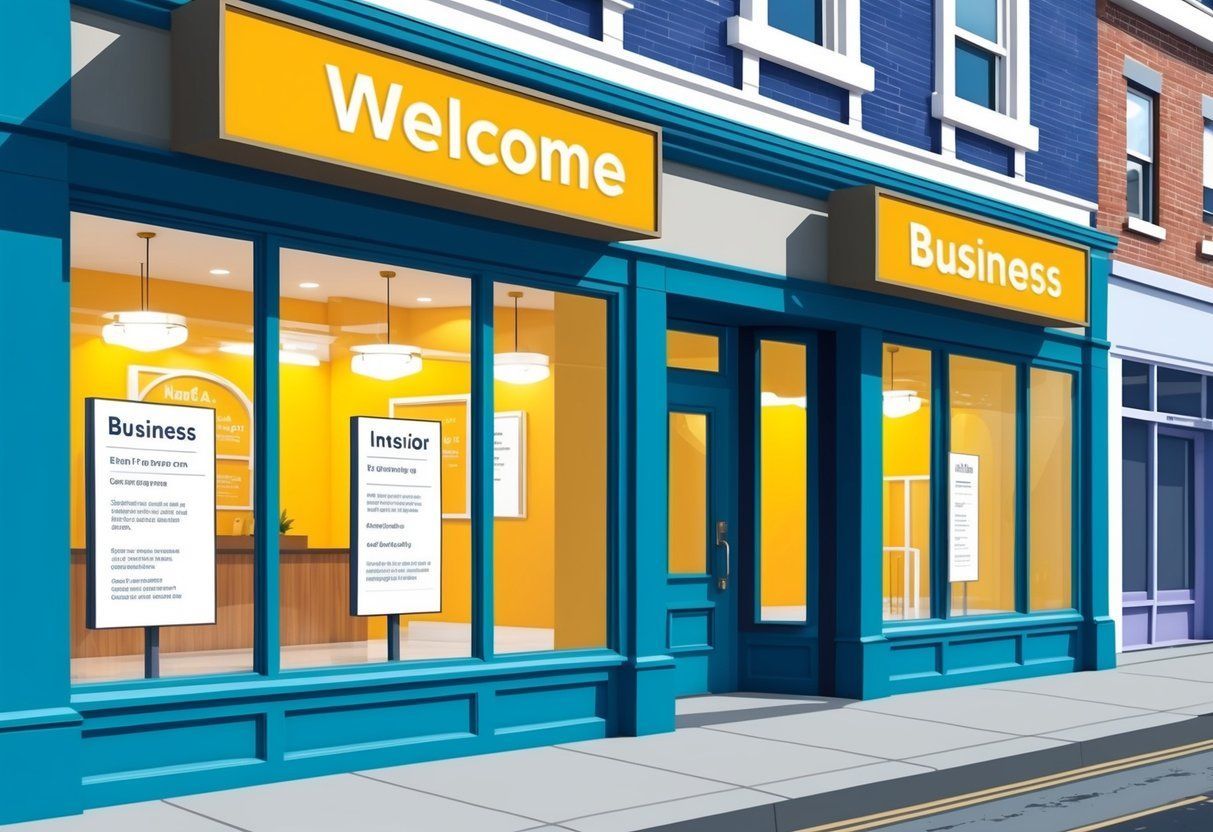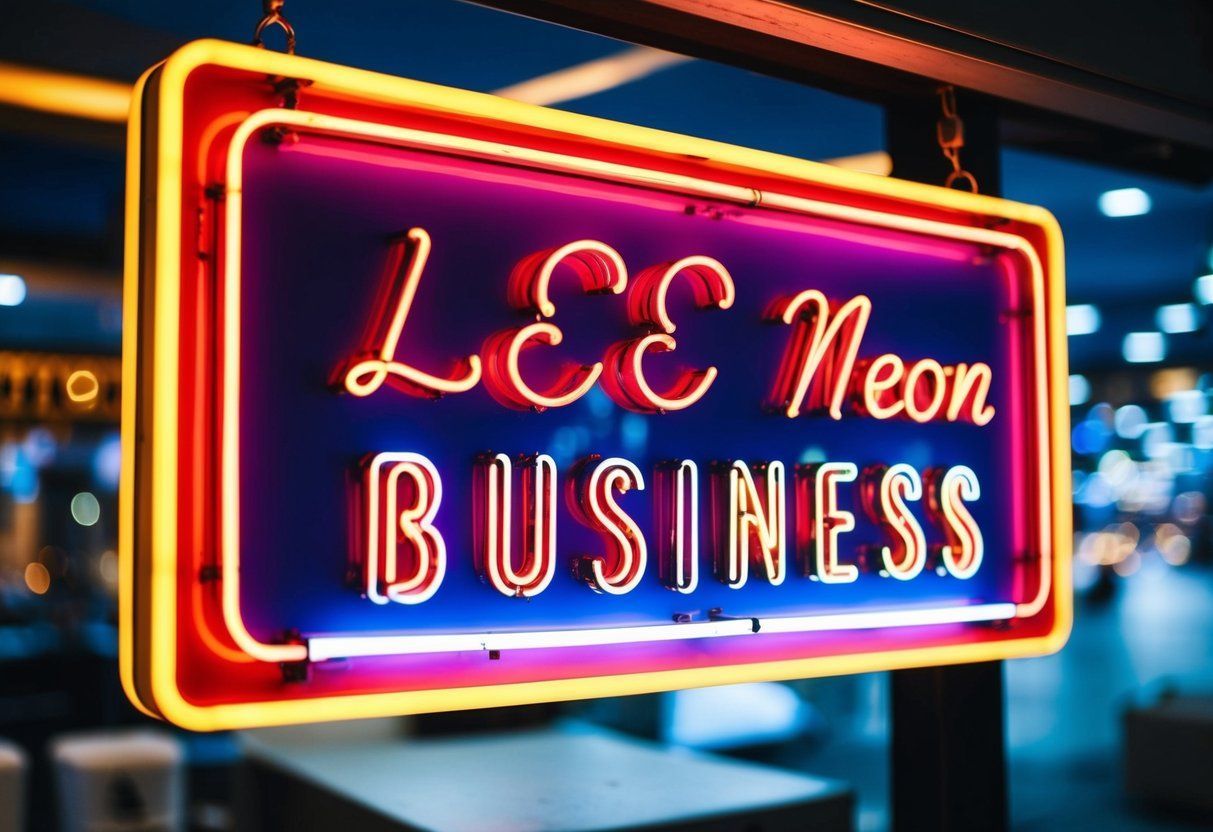Indoor signs are an essential component of any business’s overall branding and marketing strategy. They provide customers with important information about the business, its products and services, and create a first impression that can impact the customer experience. Indoor signs come in various types and can be made from different materials, each with its own unique set of benefits and drawbacks.
Understanding Indoor Signage is crucial to creating effective signs that will help your business stand out from the competition. Design Elements for Effective Signs include choosing the right font, color, and layout to ensure that your sign is easy to read and visually appealing. Materials and Fabrication play a significant role in the durability and longevity of your sign, as well as its overall appearance. Types of Indoor Signs and Their Uses vary depending on the business’s needs, and it is essential to choose the right type of sign for each location. Sign Installation and Maintenance are also crucial to ensure that your sign remains in good condition and continues to provide customers with the information they need.
Key Takeaways
- Understanding the different types of indoor signage is critical to choosing the right sign for your business.
- Design elements, materials, and fabrication all play a significant role in creating effective indoor signs.
- Proper installation and maintenance are crucial to ensuring that your sign remains in good condition and continues to provide customers with the information they need.
Understanding Indoor Signage
Indoor signage is an essential element of a business’s marketing and branding strategy. It helps customers navigate through a space, identify products, and understand a company’s message. In this section, we will discuss the purpose and importance of indoor signage, the types of indoor signs, and how they compare to outdoor signs.
Purpose and Importance
The primary purpose of indoor signage is to provide information to customers and visitors. It can help guide people through a space, identify products or services, and communicate a company’s message. Indoor signage is also crucial for brand awareness, as it can reinforce a company’s visual identity and messaging.
Indoor signage is especially important for businesses that have a physical location, such as retail stores, restaurants, and offices. It can help create a welcoming and professional atmosphere, while also improving the customer experience.
Types of Indoor Signs
There are many types of indoor signs, each with its own unique purpose and design. Some common types of indoor signs include:
- Wayfinding signs: These signs help people navigate through a space, such as directional signs, floor plans, and maps.
- Informational signs: These signs provide information about a product or service, such as pricing, features, and specifications.
- Promotional signs: These signs promote a product or service, such as sale signs, banners, and posters.
- Branding signs: These signs reinforce a company’s visual identity, such as logos, slogans, and mission statements.
Comparing Indoor and Outdoor Signs
Indoor and outdoor signs serve different purposes and have different design requirements. Outdoor signs need to be visible from a distance and withstand weather conditions, while indoor signs need to be readable up close and fit the aesthetic of the space.
Indoor signs can also be more targeted and specific, as they are designed for a particular audience in a particular space. Outdoor signs, on the other hand, need to appeal to a broader audience and convey a message quickly and clearly.
In conclusion, indoor signage plays a vital role in a business’s marketing and branding strategy. By understanding the purpose and types of indoor signs, as well as how they compare to outdoor signs, businesses can create effective and impactful signage that improves the customer experience and reinforces their brand identity.
Design Elements for Effective Signs
When it comes to designing indoor signs, there are several key elements that should be taken into consideration to ensure that the signs are effective. These elements include visual appeal, messaging and communication, and branding consistency.
Visual Appeal
One of the most important aspects of any indoor sign is its visual appeal. Signs that are eye-catching and visually appealing are more likely to grab the attention of passersby and convey the intended message. This can be achieved through the use of bold colors, contrasting fonts, and high-quality graphics.
Messaging and Communication
Another crucial element of effective indoor signs is the messaging and communication. Signs should clearly and concisely convey the intended message, whether it’s providing directions, advertising a product or service, or conveying important safety information. The messaging should be easy to read and understand, and the sign should be placed in a location where it can be easily seen by the target audience.
Branding Consistency
Finally, it’s important to ensure that indoor signs are consistent with the branding of the business or organization. This includes using the company’s logo, slogan, and other brand elements to create a cohesive look and feel across all signage. Consistency in branding helps to reinforce the company’s identity and can help to build brand recognition and loyalty.
In summary, effective indoor signs should be visually appealing, clearly communicate the intended message, and be consistent with the branding of the business or organization. By taking these design elements into consideration, businesses can create signs that are both effective and attractive.
Materials and Fabrication
Common Sign Materials
Indoor signs can be made from a variety of materials, each with its own unique properties. Some common materials used for indoor signs include acrylic, vinyl, aluminum, fabric, plastic, and glass. Acrylic is a popular choice due to its durability and versatility. It can be easily cut and shaped into various sizes and shapes. Vinyl is also a popular choice due to its affordability and flexibility. It can be used for lettering, graphics, and even wall murals.
Aluminum is another popular material choice due to its strength and durability. It is often used for outdoor signs, but can also be used for indoor signs. Fabric signs are becoming more popular due to their lightweight and easy-to-install nature. They can be printed with high-quality graphics and are often used for trade shows and events.
Fabrication Techniques
The fabrication technique used for indoor signs will vary depending on the material used. For example, acrylic signs can be laser-cut or CNC-milled to create intricate designs and shapes. Vinyl signs can be printed using a large-format printer and then cut to size. Aluminum signs can be cut using a water jet or plasma cutter.
Fabric signs can be printed using dye-sublimation or direct-to-fabric printing. Plastic signs can be molded or vacuum-formed to create unique shapes and designs. Glass signs can be etched or sandblasted to create a frosted effect.
Sustainability Considerations
When choosing materials for indoor signs, it is important to consider sustainability. Many materials used for signs can be recycled, such as aluminum and plastic. Fabric signs can be made from recycled materials, such as polyester. Glass signs can also be made from recycled glass.
In addition to using sustainable materials, it is important to choose fabrication techniques that minimize waste and energy consumption. For example, laser-cutting acrylic signs produces less waste than traditional cutting methods. Choosing energy-efficient equipment and using eco-friendly inks can also help reduce the environmental impact of indoor sign fabrication.
Types of Indoor Signs and Their Uses
Indoor signs are an essential part of any business’s marketing and communication strategy. They help customers navigate through the facility, provide information about products and services, and promote sales. There are several types of indoor signs, each with its unique purpose and use.
Directional and Wayfinding Signs
Directional signs are used to guide customers to specific areas of the facility, such as restrooms, exits, or elevators. Wayfinding signs are used to help customers navigate through the facility and find their way around. These signs are crucial in large facilities such as hospitals, airports, and shopping malls.
Informational Signs
Informational signs provide information about products and services, hours of operation, and other essential details. These signs can be used to promote sales or provide information about the business’s history or mission. They can be placed on walls, counters, or display cases.
Promotional and Advertising Signs
Promotional and advertising signs are used to promote sales and attract customers. These signs can be placed in strategic locations such as store windows or near the entrance to the facility. They can be used to promote a specific product or service or to advertise a sale or promotion.
Regulatory and Compliance Signs
Regulatory and compliance signs are essential for businesses to comply with regulations such as the Americans with Disabilities Act (ADA). These signs provide information about accessible entrances, restrooms, and other facilities. They are also used to provide safety information such as fire exits and emergency evacuation routes.
In conclusion, indoor signs are an essential part of any business’s marketing and communication strategy. They provide customers with information about products and services, promote sales, and help customers navigate through the facility. By using the right type of indoor sign, businesses can improve their customer experience and increase sales.
Sign Installation and Maintenance
Installation Process
When it comes to installing indoor signs, it is important to work with a full-service sign company that has experience in signage solutions. The installation process typically involves a site survey to assess the location and determine the best placement for the sign. The sign company will then create a design and obtain any necessary permits before installation can begin.
During the installation process, the sign will be mounted securely to the wall or ceiling using appropriate hardware. Wiring and electrical components will also be installed, if necessary. The installation team will ensure that the sign is level and properly aligned for maximum visibility.
Maintenance and Upkeep
Regular maintenance and upkeep are essential for keeping indoor signs looking their best and functioning properly. This includes cleaning the sign face and any lighting fixtures, replacing burnt-out bulbs, and checking for any damage or wear and tear. It is recommended to schedule routine maintenance checks with a sign company to ensure that any issues are addressed promptly.
In addition to regular maintenance, it is important to keep the sign up to date with any changes in branding or messaging. This may involve updating the design or replacing the entire sign. A full-service sign company can assist with these updates and provide new products that meet the client’s needs.
Updating Signage
When it is time to update signage, a full-service sign company can provide a range of options to choose from. This may include updating the design of the existing sign, replacing the sign face or lighting fixtures, or installing a completely new sign. The sign company can work with the client to determine the best solution based on their budget and needs.
In conclusion, proper installation and maintenance are crucial for ensuring that indoor signs are effective and long-lasting. Working with a full-service sign company can provide the expertise and resources needed to keep signage up to date and functioning properly.
Impact of Signage on Customer Experience
Signage is an essential part of any business, and it plays a crucial role in shaping the customer experience. It is the first point of contact between the customer and the business, and it can make or break the customer’s impression of the brand. In this section, we will discuss the impact of signage on customer experience, including first impressions and atmosphere, navigational ease, and brand and product awareness.
First Impressions and Atmosphere
The first impression is everything, and signage is the first thing that customers see when they enter a business. A well-designed sign can create a positive and welcoming atmosphere, while a poorly designed sign can make the customer feel unwelcome or confused. The atmosphere of the business is also reflected in the signage. For example, a high-end restaurant will have different signage than a fast-food chain. The signage should reflect the brand’s personality and values.
Navigational Ease
Signage also plays a critical role in navigational ease. Customers need to be able to find their way around the business easily. Signage should be clear, concise, and easy to read. It should also be consistent throughout the business, so customers don’t get confused. For example, if the signage in the store is different from the signage in the parking lot, customers may get lost or frustrated.
Brand and Product Awareness
Signage is an effective way to create brand and product awareness. It can showcase the brand’s logo, tagline, and other important information. It can also promote products and services to customers. A well-designed sign can help customers remember the brand and its products. It can also attract new customers who may not have heard of the brand before.
In conclusion, signage is an integral part of the customer experience. It can create a positive first impression, provide navigational ease, and promote brand and product awareness. Businesses should invest in well-designed signage that reflects their brand’s personality and values.
Custom Signage Solutions
When it comes to indoor signage, having custom solutions can help businesses stand out and make a lasting impression on their customers. Custom signage solutions offer a range of benefits, including personalized design services, unique material combinations, and innovative lighting options.
Personalized Design Services
Custom business signs can be designed to fit the specific needs of a business, and personalized design services can help businesses create a unique and memorable sign. Working with a professional designer, businesses can create a sign that reflects their brand and captures the attention of their target audience. From logo design to font selection, a personalized approach to signage design can help businesses create a cohesive and impactful brand image.
Unique Material Combinations
Signage material can also be customized to fit the needs of a business. From traditional materials like wood and metal to modern materials like acrylic and PVC, businesses can choose from a range of options to create a sign that fits their aesthetic and functional requirements. Unique material combinations can also be used to create a one-of-a-kind sign that stands out from the competition.
Innovative Lighting Options
Neon signs and LED signs are popular choices for indoor signage, and energy-efficient options are becoming increasingly popular. Innovative lighting options can help businesses create a sign that is not only eye-catching but also cost-effective and environmentally friendly. From backlit signs to edge-lit signs, businesses can choose from a range of lighting options to create a sign that fits their needs and budget.
In conclusion, custom signage solutions offer a range of benefits for businesses looking to create a unique and impactful indoor sign. From personalized design services to unique material combinations and innovative lighting options, businesses can create a sign that reflects their brand and captures the attention of their target audience.
Planning and Budgeting for Indoor Signs
When it comes to indoor signs, planning and budgeting are key to ensuring that a business has the right signage to meet its needs. Here are some important considerations to keep in mind when planning and budgeting for indoor signs.
Assessing Signage Needs
Before investing in indoor signs, it is important to assess the signage needs of a business. This may involve considering factors such as the type of business, the size of the space, and the purpose of the signage. For example, a retail store may need signs to promote products and sales, while a medical office may need signs to direct patients to different areas of the facility.
Cost Considerations
Cost is another important factor to consider when planning and budgeting for indoor signs. Small businesses in particular may have limited budgets, so it is important to find cost-effective solutions that still meet their needs. Some cost considerations to keep in mind include the type of material used for the signs, the size of the signs, and any additional features such as lighting or mounting hardware.
Obtaining Quotes
To get a better idea of the cost of indoor signs, it is important to obtain quotes from different sign companies. This can help businesses compare prices and find the best value for their budget. When obtaining quotes, it is important to provide detailed information about the type of signs needed, the size of the space, and any specific requirements.
Overall, planning and budgeting for indoor signs requires careful consideration of a business’s needs and budget. By assessing signage needs, considering cost factors, and obtaining quotes, businesses can find the right indoor signs to promote their brand and meet their goals.
Frequently Asked Questions
What materials are commonly used for interior signage?
There are several materials commonly used for indoor signs, including acrylic, PVC, aluminum, and foam board. Acrylic is a popular choice as it is durable and can be easily customized with graphics and text. PVC is lightweight and cost-effective, making it a great option for temporary signage. Aluminum is a sturdy material that can withstand harsh weather conditions and is often used for outdoor signs. Foam board is a lightweight option that is easy to mount and ideal for short-term use.
How do you choose the right size for indoor signs?
The size of indoor signs depends on several factors, such as the location, purpose, and visibility. The sign should be large enough to be easily seen from a distance, but not so large that it overwhelms the space. It is important to consider the viewing distance and angle when determining the size of the sign. Additionally, the size should be proportionate to the surrounding environment and other signage in the space.
What are the latest trends in interior signage design?
The latest trends in interior signage design include minimalist designs, bold typography, and the use of natural materials. Many businesses are opting for simple, clean designs that convey their brand message effectively. Bold typography is also gaining popularity, as it can easily grab the attention of customers. The use of natural materials, such as wood and stone, is also becoming more prevalent as it adds warmth and texture to the space.
How does ADA compliance affect indoor sign choices?
ADA compliance is an important consideration when choosing indoor signs. The Americans with Disabilities Act (ADA) requires that all public spaces have signage that is accessible to people with disabilities. This includes signs with braille and tactile lettering, as well as signs with high contrast colors and easy-to-read fonts. Failure to comply with ADA regulations can result in legal penalties and fines.
What are the best practices for maintaining indoor signs?
To ensure the longevity and effectiveness of indoor signs, it is important to keep them clean and well-maintained. Regular cleaning with a soft cloth and mild detergent can help remove dirt and grime. Avoid using harsh chemicals or abrasive materials that can damage the sign. Additionally, it is important to regularly inspect the sign for any damage or wear and tear and replace it as needed.
How can indoor signage enhance brand visibility?
Indoor signage is an effective way to enhance brand visibility and create a cohesive brand identity within a space. By incorporating brand colors, logos, and messaging into indoor signs, businesses can reinforce their brand image and create a memorable experience for customers. Additionally, strategically placed signs can help guide customers through the space and highlight key products and services.…
